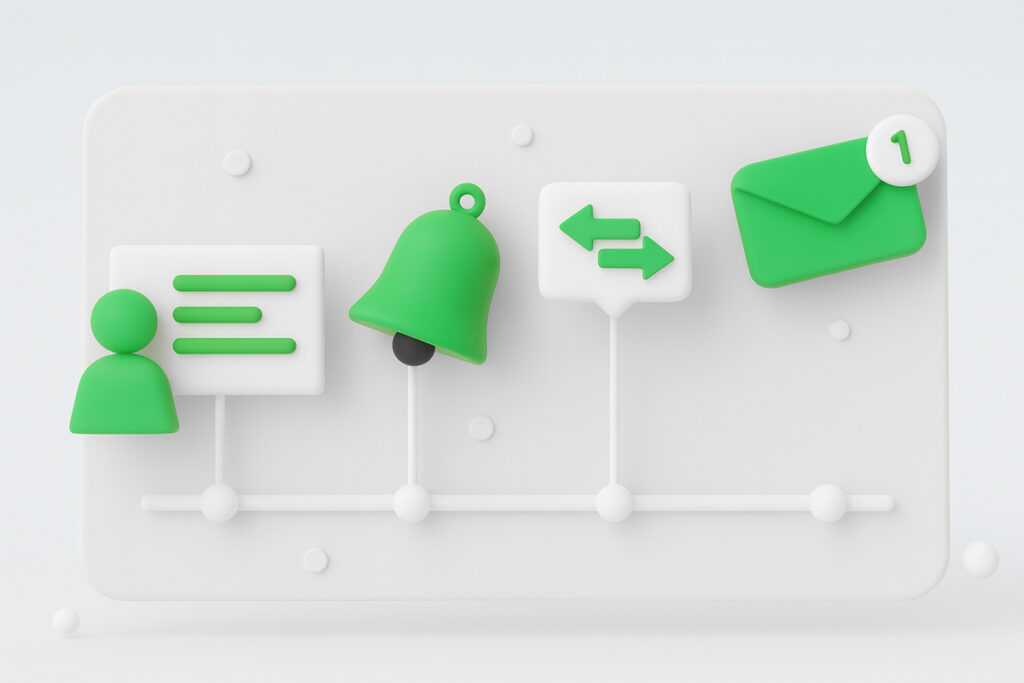You automate to save time. So why is everyone doing more manual work than before?
Common Pitfalls in HR Automation
These are some of the most common traps. What starts as a helpful idea often turns into an obstacle.
Notifications overload
Employees get too many alerts, or the same message repeats in different places.
They stop paying attention, even to important messages.
🟢 Result: Messages are ignored, and nothing gets actioned.
Tagging chaos
Tags are added automatically without a consistent structure. Some are too broad, others too specific.
Search filters become cluttered and confusing.
🟢 Result: People can't find what they need, and admins lose trust in the system.
Set-it-and-forget-it workflows
Workflows are built once and never reviewed. Logic becomes layered, rules overlap, and no one is sure how or why something triggers.
🟢 Result: Admins are afraid to make changes, and the system becomes harder to manage over time.
AI that still needs rewriting
AI-generated titles, summaries, or translations don’t quite match your tone or intent. They sound generic or repeat what’s already there.
Someone still has to rewrite or format everything.
🟢 Result: You save time upfront but spend it again fixing the outcome.

When Automation Works
Here’s the basic rule:
If something is predictable, happens often, and doesn’t need human judgement, it’s probably a good candidate for automation.
Think:
- Assigning training based on job role
- Sending reminders when deadlines are missed
- Tagging content based on clear categories
- Triggering a message after a form is submitted
But even then, the logic behind it needs to be clear.
Otherwise, it breaks as soon as someone updates a field or adds a new group.

A Simple Way to Evaluate Automation
| Step | What to check | Why it matters |
|---|---|---|
| 1. Start with the problem | What are we trying to solve? | Look for patterns like repeated questions, bottlenecks, or manual work that slows people down. If the process is already clear, fast, and consistent, automation is unlikely to make it better. |
| 2. Map the user journey | How does the process work in practice? | Follow the steps from the employee’s point of view. Where do they get stuck, miss information, or receive too many messages? Real usage often reveals gaps that system logic alone doesn’t catch. |
| 3. Check complexity and frequency | How often does this happen, and is it consistent? | If the task is common and follows a predictable path, it’s a good fit for automation. If it varies by region, audience, or use case, it may be better handled manually. |
| 4. Build in a feedback loop | How will you know if it’s working? | Make sure there’s a way to measure what’s happening and adjust if needed. Track whether it’s saving time, reducing confusion, or creating new problems. |
| 5. Assign ownership and review regularly | Who is responsible for this long term? | Every automation needs someone to manage it. Without regular check-ins, logic can break, fall out of sync with the process, or continue running when it’s no longer useful. |
Helping You Build Smarter Workflows and Clearer Messaging
You don’t need more rules. You need better logic, smarter flows, and messages that make sense to real people. That’s where we come in.
We can help you:
- Review how your current automations actually show up in the user journey
- Spot where things get noisy, confusing, or overlooked
- Decide which type of message works best: email, notification, or something else
- Plan the timing and structure so messages arrive when they’re needed, not when they’re ignored
- Write clear, user-friendly copy that gets to the point
- Design how messages should look and feel, including layout and visuals
- Set up feedback tools that give your team a way to learn what’s working and what’s not
- Simplify flows so your HR platform supports your strategy instead of creating workarounds
We’re not in the back end of your system, but we’re deeply involved in how things work for your team and your employees. Whether it’s writing better reminders or shaping smarter workflows, we’re here to help you make automation feel effortless.


Let’s Get the Balance Right
Not everything needs to be automated.
And not every automation saves time.
If your HR system is starting to feel like it’s working against you, it might be time to simplify.
Good automation should feel invisible.
No noise. No confusion. Just a smoother experience for everyone.
Get in touch, send an email, or book a meeting. We would love to explore what we can create together.


